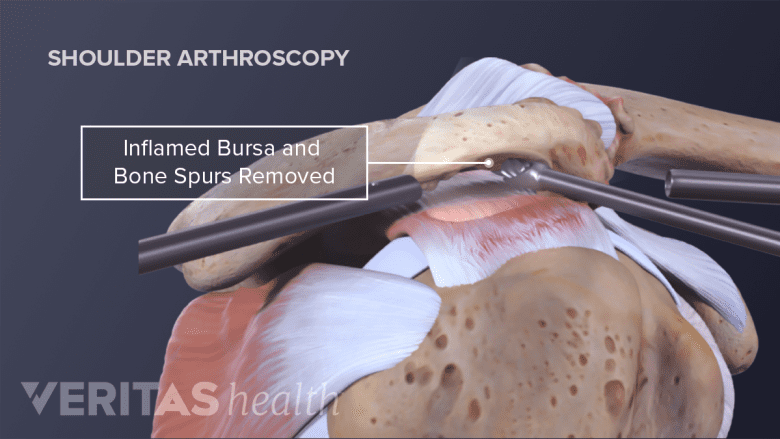Most people with torn rotator cuffs do not require surgery, but surgery may be recommended when the patient has:
- Moderate to significant pain and weakness in the shoulder,
- Not benefited from nonsurgical treatment, such as physical therapy,
- A large cuff tear, and/or,
- A tear(s) produced by a new injury.
Rotator cuff tears are usually caused by trauma, tissue degeneration, and shoulder impingement.
In This Article:
Goals of Rotator Cuff Surgery
Reducing pain is the first goal of surgery. Increasing shoulder function is another, but several factors influence this outcome: patient’s age, rehabilitation program, and the tear’s size and age. Rotator cuff surgery is an elective procedure, meaning it is the patient’s choice.
See Rotator Cuff Injuries: Initial Treatment
Deciding on Rotator Cuff Surgery
Rotator cuff tears can result from a one-time event, like a fall, or develop over time, causing little to no pain at first. When tears cause symptoms, nonsurgical treatment provides pain relief and improved function in about 50% of patients.
Patients who decide to have rotator cuff surgery usually notice a decrease in pain and other symptoms. However, patients with large to very large tears tend to have a high incidence of re-tears.
See Rotator Cuff Injuries: Symptoms
Rotator cuff surgery is not recommended for a person who has a rotator cuff tear as well as shoulder stiffness due to adhesive capsulitis, also known as frozen shoulder. Substantial stiffness needs to be treated prior to surgery to prevent postoperative stiffness.
What Happens During Rotator Cuff Surgery?
Arthroscopic surgery involves removal of bone spurs or inflamed bursa in the rotator cuff area.
Surgery typically involves:
- Making space for the rotator cuff tendons to move
- The surgeon removes loose fragments in the rotator cuff area, such as bone spurs, pieces of tendon, or inflamed sections of the bursa sac. This procedure is called shoulder debridement.
- The surgeon might also shave down the acromion bone that located at the top of the shoulder, which can pinch the rotator cuff. This procedure is called shoulder decompression.
- Stitching together the torn edges of the damaged rotator cuff and re-attaching it to the humerus bone.
The three most common surgery types to treat rotator cuff tears are:
- Open repair surgery, which requires a 4 to 6 cm incision.
- Arthroscopic repair, surgery involving one or more incisions of less than 1 cm.
- Mini-open repair, which is a combination of open and arthroscopic surgery, and includes an incision of 1 to 5 inches, depending on the repair. This technique may be used when a patient has more than one tendon tear.
See Shoulder Decompression: Arthroscopy vs Open Surgery
The surgery type used depends several factors, including:
- The surgeon’s knowledge and experience with a particular surgery
- Patient factors, including tear size, body structure, and tissue and bone quality
Rotator cuff surgery is usually successful. It can take 4 to 6 months to recuperate from surgery and sometimes up to a year for a full recovery.







